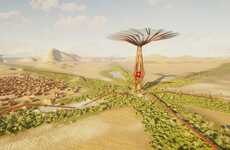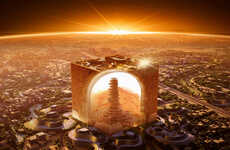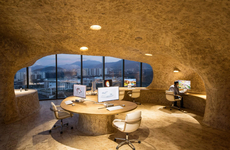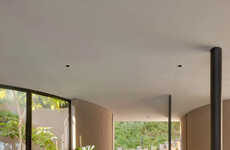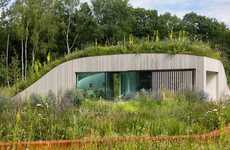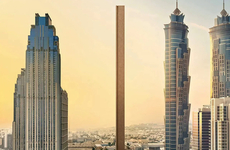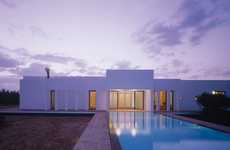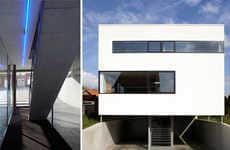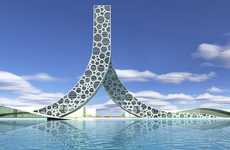
The Earthscraper Will be Mexico City's Largest Subterranean Structure
Omar Yusuf — October 2, 2011 — Art & Design
References: dvice & geekologie
The Earthscraper's name very accurately describes its design principle: it's a building that carves into the ground, reaching its zenith some 65 storeys below the soil surface.
Designed by BNKR Arquitectura, a Mexican engineering firm, the conceptual Earthscraper intends to be built smack-dab in the midst of Mexico City. The architects working on the project have explained that the subterranean edifice would not only preserve the city's infamously low skyline, but it would contribute to the cultural flair of the area, as the first 10 floors would be occupied by Aztec museum exhibits. Further down, plans have been made for a shopping center, retail stores, apartment buildings and (all the way at the bottom) office buildings.
Natural light will be allowed to reflect and refract all the way down via a series of glass ducts that run along the height of the building.
Designed by BNKR Arquitectura, a Mexican engineering firm, the conceptual Earthscraper intends to be built smack-dab in the midst of Mexico City. The architects working on the project have explained that the subterranean edifice would not only preserve the city's infamously low skyline, but it would contribute to the cultural flair of the area, as the first 10 floors would be occupied by Aztec museum exhibits. Further down, plans have been made for a shopping center, retail stores, apartment buildings and (all the way at the bottom) office buildings.
Natural light will be allowed to reflect and refract all the way down via a series of glass ducts that run along the height of the building.
Trend Themes
1. Subterranean Architecture - The concept of digging down instead of building up opens up new opportunities for developing urban spaces and customizing the user's experience.
2. Preserving Skyscapes - In cities with iconic skylines, subterranean architecture can help preserve the visual identity while meeting the growing demand for space.
3. Sustainable Infrastructure - Taking advantage of natural light and temperature control underground can reduce energy costs and improve the building's environmental footprint.
Industry Implications
1. Architecture - Designing innovative subterranean structures like the Earthscraper requires expertise in engineering, construction, and urban planning.
2. Museums - Adding immersive exhibits to underground spaces can offer visitors a unique and memorable experience.
3. Real Estate Development - Investing in subterranean real estate development is a disruptive strategy that can offer an alternative to conventional building practices and address urban density challenges.
5.2
Score
Popularity
Activity
Freshness



